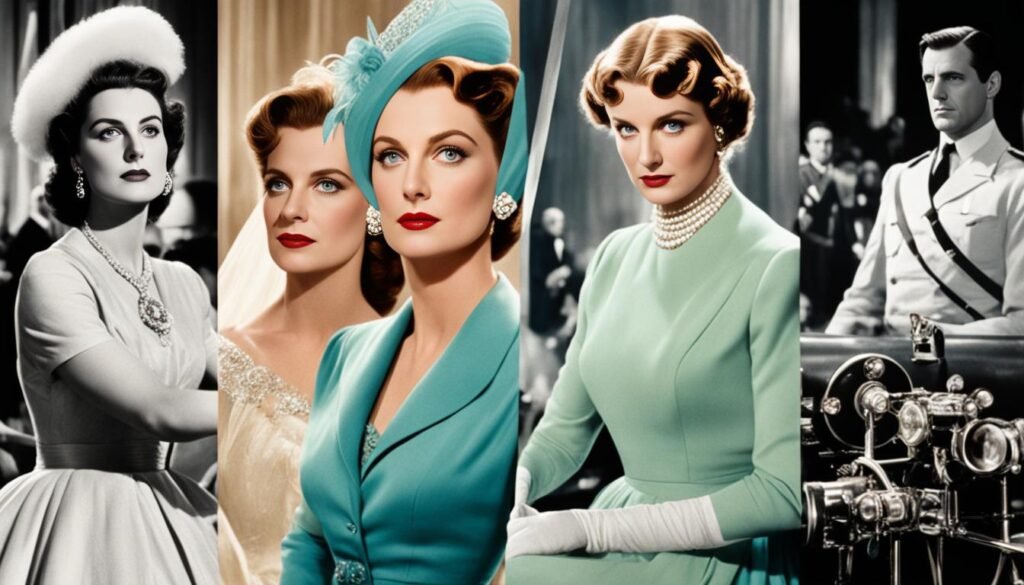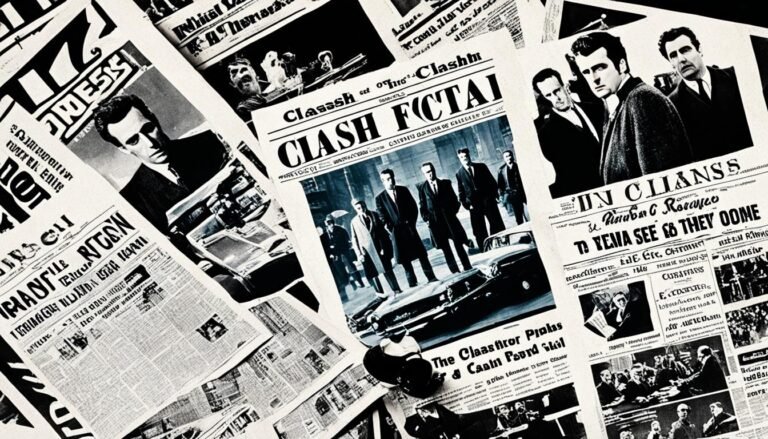Portronics iKonnect C Pro Type C to 3.5 mm Audio Jack Connector with DAC Headphone Converter Adapter Compatible with iPhone 15 Pro Max/15 Pro/15 Plus, Galaxy S23/S22/S21/S208 & Other Type C Phones
₹218.00 (as of February 1, 2025 20:52 GMT +05:30 - More infoProduct prices and availability are accurate as of the date/time indicated and are subject to change. Any price and availability information displayed on [relevant Amazon Site(s), as applicable] at the time of purchase will apply to the purchase of this product.)Biopics, or biographical films, have captivated audiences for years. They cover a wide range of genres and themes, such as comedy, war, drama, and music. Some of the most well-known biopics can be found on popular streaming platforms like Netflix, with over 40 mentions.1
Yet, the reality in these movies can sometimes get mixed up with fiction. This happens because filmmakers often take creative freedoms. They do this to make the stories more interesting. So, let’s take a closer look at the real stories behind these well-known biopics. We’ll see how much of what we see onscreen is true and how much is made up to make the movies more entertaining.
Key Takeaways
- Biopics often walk a fine line between faithfully representing the lives of their subjects and taking creative liberties to enhance the storytelling.
- The portrayal of mental health conditions, such as the representation of schizophrenia in “A Beautiful Mind,” can be exaggerated or simplified for cinematic effect.
- Iconic moments, like the pen ceremony in “A Beautiful Mind,” are sometimes completely fabricated for the film, rather than being based on true events.
- Filmmakers may combine real-life figures into composite characters or omit certain aspects of a biographical subject’s life to streamline the narrative.
- Historical inaccuracies and embellishments, such as dramatized events or fictionalized settings, are common in biopics to heighten the emotional impact or suit the cinematic medium.
Biopics and Creative Liberties
Biopics mix truth with a bit of fiction to tell an exciting story.2 They sometimes change events, leave out characters, or add dramatic scenes for effect.3 But, this mix can make it hard to know what’s real and what’s not, making the story inaccurate.
Finding a sweet spot between telling a good story and staying true to history is tough. For movie makers, this is an ongoing challenge.
The Fine Line Between Fact and Fiction
Adding creative touches in biopics helps make them more interesting.3 But, playing loose with facts, like adding romance or changing how we see historical people, can be misleading.
They must also avoid too much drama and stick to the main truths. This keeps the story honest yet engaging.
Dramatic Embellishments for Cinematic Effect
Biopics are loved for how they bring real stories to life on the big screen.2 Movie makers often tweak the story a bit to make it more dramatic and fun.
They might change some events, cut out some people, or make up iconic scenes. This is all to fit the movie world better.
Balancing Accuracy with Entertainment Value
While many movies are now about superheroes, biopics are still in demand.2 They offer unique opportunities for actors, and people love seeing history played out before their eyes.
But, keeping the story faithful to reality while also being fun remains a big challenge. Filmmakers always have to work hard to get it right.
Exploring Mental Health Representations
Biopics and other films have started to open up about mental health issues.4 They help us understand the tough situation people face with mental illness.
These movies and TV shows break the silence about often misunderstood conditions4. They show us the real struggles of those dealing with mental health.
The Portrayal of Schizophrenia in A Beautiful Mind
“A Beautiful Mind” is a famous movie about John Nash, a mathematician with schizophrenia4. It was praised for its deep emotion and acting but was said to exaggerate Nash’s illness.
Experts point out that schizophrenia’s hallucinations are not shown accurately in the movie4. They are usually more like funny, not so real images, not exactly like real people.
This means the movie might not show the true face of schizophrenia. It aimed to tell a story but might have missed some important points about mental illness4.
Navigating Sensitive Topics with Care
Filmmakers need to be careful when talking about mental health5. The way they show mental illness can change how people view those who suffer from it.
Films can either strengthen bad views or help people understand better5. This is a big responsibility for those making movies about mental illness.
The Real Stories Behind Biopics
The stories behind biopics are important for understanding mental health4. They share personal journeys from people like John Nash and Anthony Bourdain.
These movies have the power to change ideas, increase understanding, and get people talking about mental health4.
Iconic Moments that Never Happened
Biopics often mesmerize us by showing the lives of real people on the big screen. Yet, sometimes, what we see isn’t exactly true. Filmmakers may add their own ideas to make the story more interesting. For instance, the pen ceremony in the movie A Beautiful Mind never really happened.6
The Pen Ceremony in A Beautiful Mind
In A Beautiful Mind, a touching scene shows professors at Princeton giving John Nash pens. Sadly, this whole moment was made up for the film. While it shows Nash getting respect from his colleagues, it wasn’t something that actually happened during his time.6 Such scenes are known as fabricated moments in biopics. They aim to make the story more engaging but may not be entirely true to the real events.
Fabricated Speeches and Award Ceremonies
Similarly, movies about real-life people might show made-up speeches or award ceremonies. These changes are meant to make the scenes stand out and move us. However, they can also alter what really happened and mix fact with fiction. This can make it hard to tell where the truth ends and the story begins.6
Filmmakers face a tough task when turning true stories into films. They need to keep the story interesting but also as true as possible. Adding fictional events, like the pen ceremony, can make the movie more captivating. Still, it might make the audience get the wrong idea about the people in the movie.
Character Composites and Omissions

Biopics often mix several real people into one character. This makes the story simpler and highlights the main parts of the person’s life. Yet, some details might get left out or changed.7 It’s a delicate balance for filmmakers. They aim to keep the core truth while using these combined characters.
Combining Real-Life Figures for Narrative Convenience
In biopics, it’s usual to show characters that bring together different real people. This practice helps tell the story in a clearer way.7 For instance, “Pain & Gain” was knocked for using these blended characters, saying it changed the story’s truth.7 Such choices help in storytelling but can lose or twist facts that are not the filmmakers’ focus.
Overlooked Aspects of Biographical Subjects
Sometimes, biopics miss showing the full complexity of a person’s life. Films like “The Elephant Man” and “Straight Outta Compton” have faced this issue.7 Critics didn’t like the way Dr. Dre’s violence towards women was skipped in “Straight Outta Compton.” By picking out just a few highlights, the filmmakers can hide many other, also crucial, parts of the real story.
| Biopic | Criticism |
|---|---|
| “A Beautiful Mind” | The film exaggerated details, such as the romance between John Nash and his wife Alicia Larde, depicting it more positively than reality.7 |
| “Marie Antoinette” | The biopic took liberties with historical accuracy by focusing more on style choices and the royal life than the political context of the time.7 |
| “The Elephant Man” | The biopic was criticized for inaccurately portraying Joseph Merrick’s agency and life circumstances.7 |
| “Straight Outta Compton” | The film faced criticism for omitting incidents of violence against women involving Dr. Dre.7 |
By shining a light on the full story, these films can give a richer, more accurate picture of the real people they’re about.
Historical Inaccuracies and Embellishments

Biopics grab our attention by telling us about real people’s lives. Yet, they often get criticized for not sticking to the true story.8 Filmmakers can change things – like making events more exciting, mixing up the order they happened, or even making up where things took place. They do this to make the movie more interesting. But, it can also make us misunderstand what really happened in history.8
Dramatized Events and Timelines
In biopics, the filmmakers often make events seem more dramatic and play around with when things happened. This makes the story more fascinating.7 For instance, the movie “A Beautiful Mind” made John Nash’s hallucinations look real and vivid, even though they weren’t as intense in real life.7 In the film about Marie Antoinette, it focused a lot on her wealth and love story. It left out a big part – the politics of the time. So, the movie didn’t show the whole truth.7
Fictionalized Settings and Locations
Biopics sometimes use made-up places and stories to make the movie more fun to watch.7 The movie “CBGB” changed parts of the punk rock history, like the bands and the club’s owner.7 Another example is “Pain & Gain,” which made a crime story more light-hearted by changing the facts.7 These changes are done for artistic reasons. But, they can make us misunderstand or remember history wrong.
The Impact of Biopics on Public Perception
Biopics can really influence how we see people and understand different cultures. They often are people’s main source of info.9 Filmmakers pick and choose what to show from a real person’s life. This can change the story the public believes.
Shaping Narratives and Cultural Understanding
These movies are important. They can teach us about history and show important themes like standing up for what’s right.9 But, they might not show the full picture. This can lead to people getting the wrong idea, especially if they only know the story from the film.
The Responsibility of Filmmakers
Filmmakers have to be careful because what they show can really matter.9 They should tell a great story, but also make sure it’s true to the real person’s life. This way, they don’t spread wrong information.9 Great performances in these movies can make a big impact on our culture.
Conclusion
The world of biopics is both captivating and challenging. It mixes true facts with creative storytelling. Filmmakers often adjust the story to make it more entertaining.10
Films like A Beautiful Mind highlight this balance. They show exaggerated mental illness and made-up events. Combining real people into fewer characters can also change the true story.10
We should watch biopics knowing they might not show the whole truth. Being aware of this lets us enjoy the movie while keeping in mind what really happened.1011
Source Links
- https://www.historyvshollywood.com/
- https://www.insidehighered.com/opinion/blogs/higher-ed-gamma/2023/12/21/pros-and-cons-learning-about-history-biopics
- https://medium.com/@thenathanchen/biopics-where-fact-meets-fiction-and-logic-dies-9d0ba8df2cdc
- https://www.nyfa.edu/student-resources/mental-illness-in-movies-tv-video-games/
- https://thesis.eur.nl/pub/55410/Vesere-Anete.pdf
- https://www.townandcountrymag.com/society/g15907978/best-movies-based-on-true-stories/
- https://collider.com/galleries/most-inaccurate-biopics/
- https://dannidewolfe.wordpress.com/2015/01/04/biopics-fact-or-fiction-an-investigation-into-the-characteristics-which-illustrate-the-way-in-which-biopics-can-truly-reflect-and-truly-misrepresent-a-life/
- https://www.nyfa.edu/student-resources/what-does-biopic-mean/
- https://www.wikihow.com/Write-a-Conclusion-for-a-Biography
- https://academic.oup.com/book/27012/chapter/196254931







0 Comments